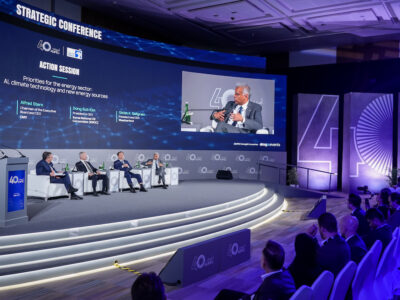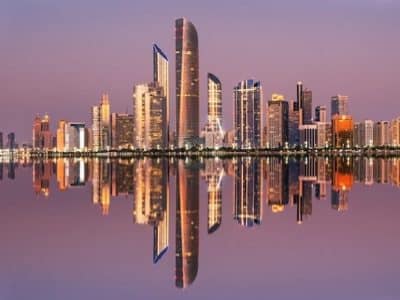What does Ahya offer to enhance increased accuracy in the calculation of carbon footprint and how are emissions tracked comprehensively?
At Ahya, we are a climate software business building a unified, AI-powered platform for scaling climate action across the region. Our mission to facilitate the regions enterprise transition towards net-zero with accuracy, transparency and equitable economic growth. To do a base-line emissions measurement with accuracy of emission biggest limiting factors revolve around data in order to estimate emissions exhaustively, accurately and frequently.
The data required is of two types (i) operating data and (ii) emission factors. Enterprises do not have a cost-effective way of tracking operating data for greenhouse gas (GHG) accounting and when they do, they do not have the right emission factors. Emission factors are standardised figures on the emissions produced by varying activities. Even though each nation should have their own GHG inventory and database (of emission factors) there has been a lag in R&D across the region.
Ahya’s core products start with AhyaOS – an AI-powered greenhouse gas (GHG) emissions operating system. AhyaOS simplifies the process of data collection via a data and integration hub and allows enterprises to perform GHG accounting, report generation, reduction planning and analysis, in a cost effective and efficient manner. AhyaOS is powered by AhyaAI which enables our proprietary database emission factors as well as analysis and reduction plans providing enhanced as well as predictive functionality for our clients.
Tawazun by Ahya, is an omni-channel voluntary carbon marketplace, which allows enterprises to purchase voluntary emission reductions or carbon offsets for emissions that cannot be reduced or avoided (rule of thumb being to reduce 90% and use offsets for up to 10 percent per business).
How do your climate-tech & AI products for measurement, reporting, reduction, analysis, and offsetting of GHG emissions help businesses better understand and navigate the challenges of sustainable practices?
We believe that entering 2024 businesses must approach climate change as an innovation opportunity and not an OPEX or CSR function (eg. UAE’s Net Zero 2050 pathway is projected to boost national GDP by 3.2% ca. AED 1,080 billion). After two decades of globalisation, we are shifting to a more polarised world and the only agenda item that brings the entire world, and its leadership together is climate action, as witnessed recently at COP-28.
In order to remain globally competitive and instil confidence in their buyers, suppliers, shareholders and regulators organisations must transition their business models to green-social capital based enterprise. Focussing on the double bottom line and investing portions their profits back in to protecting the environment and assessing how climate change will impact their operations in the short to long term.
Ahya’s platform provides products which empower our clients to do just that. AhyaOS provides simplicity in measurement, reporting, reduction planning as well as analysis.
Tawazun allows businesses to purchase voluntary emission reductions, for emissions that cannot be reduced or evaded, in turn providing climate finance to nature or technology based carbon capture projects around the world. AhyaAPI provides the necessary infrastructure for tech enabled businesses or financial institutions to take the decision-making directly to their customers.
How is Ahya tailored to the different needs of the markets across the region you cover?
For the Middle East, North Africa and Pakistan (MENAP) the increasing share of global emissions currently between 8 to 10 percent is a worrying trend, even though emissions per capita remain low, this has been caused primarily due to increase in emissions intensity: number of emissions per USD of GDP, or revenue for private sector enterprises.
Emissions intensity in accordance with the Kaya Identity, can be attributed due to population growth or energy intensity – emissions per unit of energy. Both have risen significantly in the past two decades. As per the International Monetary Funds 2022 assessment, reaching the goal of net-zero emissions set by the Governments of MENAP countries, and improving on energy intensity, would either require a regionally implemented carbon tax of $8 per tCO2e or an overall investment of approximately $900 billion in renewable energy.
We believe that a mixture between the two approaches is likely from the regions governments. However, this will not be sufficient unless the private sector takes a leadership role in reducing their emissions and supporting project developers in nature based sequestration, investing in renewable energy, circular economy as well as technology based carbon capture and storage. Unlike the US, MENAP is still developing and cannot solely rely on high capital-intensive technologies (for carbon capture) and must instead look at smart and efficient ways of reduction.
Climate action needs vary country to country. For KSA, most of the reduction, due to the high fossil fuel GDP at 63 percent must come from investments and shifts in business models. We enable Saudi enterprises to provide climate financing to innovative, verified projects via Tawazun and to create reduction plans and strategies via AhyaOS in a cost-effective manner.
The need is very different for the Emirates, which has seen its’ export oil GDP decrease to 30 percent due to diversification and due to its high digital penetration coupled with multiple policies in: (i) UAE Net Zero 2050, (ii) National Climate Change Plan, (iii) National Determined Contribution’s (which have been updated), (iv) UAE Energy Strategy. In the Emirates there is a need to mandate reporting as compulsory for listed businesses which is simplified on AhyaOS, as well as incentivise mass adoption at the customer experience level via AhyaAPI.
For Pakistan and Egypt, the needs are similar, their export sectors are mainly textiles to the EU, their energy mix is mainly fossil fuel based and the remaining economic activity stems from agriculture. AhyaOS offers an efficient and easy to use solution for such enterprises to start with their emissions report and create their reduction trajectory in line with SBTi’s. Pakistan and Egypt also offer fertile land for nature-based sequestration and avoided non-natural emissions which can generate carbon credits, yet despite a few world recognised projects such as Delta Blue Carbon, few have gotten global recognition.
Tawazun offers project developers a solution to have their projects verified in accordance with US standards and listed digitally (without any prohibitive costs) for purchase by in regional and global voluntary markets.

Recently the UAE hosted COP-28 accompanied by several favourable announcements. With regards to regulations, can you elaborate on how these will transpire and how Ahya is positioned to address the upcoming shifts?
The key announcements from COP 28 included: the creation of a Loss & Damage Fund with $300 million committed for support to developing countries vulnerable to climate change, UAE Banks Federation announcing to mobilise AED 1 Trillion for sustainable finance by 2030 and ALTÈRRA, a climate finance investment platform with a commitment of $30 billion.
The first standard pertaining to sustainability was the Greenhouse Gas Protocol in 1998 and has acted as the global benchmark for all subsequent ones. International Sustainability Standards Board (ISSB) was formed at COP-26 to develop a global baseline of standards and has since then released the IFRS – S1, and IFRS – S2 for listed and private companies.
The Emirates have already taken several measures on sustainability reporting with the Dubai Financial Markets and Abu Dhabi Securities Exchange with the Environmental, Social and Governance (ESG) Disclosure Guidance for public listed companies.
Similarly, the UAE’s Securities & Commodities Authority included sustainability in the Corporate Governance Code for PJSCs in 2020 and made it mandatory for them to do annual reporting in line with the Global Reporting Initiative (GRI) standards. The bourses including DFM have a UAE ESG Index and ADGM have ESG disclosure requirements for companies as well as for funds.
KSA has followed a similar approach with their Bourse – Tadawul issuing ESG Disclosure Guidelines in 2021 for two hundred listed companies, recommending GHG Protocol as the basis for emissions accounting and endorsing GRI and IISB as well as the Task Force on Climate Related Disclosures (TFCD).
The Financial Regulatory Authority of Egypt was one of the first countries to set-up an ESG index in 2010 and in 2021 has required all companies listed on the Egyptian bourse with a capital of EGP 100 million+ to comply with ESG disclosure guidelines from 2023 onwards. The Securities and Exchange Commission of Pakistan (SECP) included ESG in the code of corporate governance and has been working with the Institute of Chartered Accountants Pakistan (ICAP) to adopt ISSB standards for all listed companies.
The key points to note is that our region will convert disclosure guidelines to mandatory reporting in an incremental manner and will be contingent on enterprise revenue or valuation thresholds, and secondly, compliance with sustainability regulations will be mandatory with those big or small but looking to raise financing from Banks or from US / EU venture capital funds.
Finally, sustainability reporting and emissions measurements must become a core part of every business model, not just to the extent of compliance from business looking to globalise. Ahya’s products simplify the process and provide a proactive approach to complex regulations (based on the GHG Protocol for measurement) and allow clients the ability to generate compliant emissions reports and reduction plans in a cost effective and hassle-free manner.
What role do carbon markets play and how is Ahya’s product suite geared to bring transparency to these markets?
There are two types of carbon markets, compliance and voluntary. Compliance markets were created via the Kyoto Protocol and enable the trading of emissions known as carbon credits based on regulations set by countries, for reaching their reduction targets. An example includes the European Exchange Traded Scheme or EU ETS.
Voluntary markets are not established by governments and were conceptualised under the Paris Agreement (2015). They act as a means of generation of voluntary emission reductions (VERs) known as carbon credits or offsets based on nature-based sequestration or technology based carbon capture and storage of greenhouse gasses.
They are geared to incentivise the relationship between private project developers and private buyers that want to purchase voluntary emission reductions to meet their targets. Last year, Saudi Arabia launched a voluntary market in which two auctions have already taken place.
The primary issues with carbon markets revolve around transparency, liquidity and environmental robustness (double-counting and verification) all of which can be solved via technology. Tawazun by Ahya is the first digital voluntary marketplace in the region, that allows the purchase of US verified VERs (carbon offsets), digitally, with local compliance and settlement.
We are also partnering with technology businesses and standards agencies to ensure that the projects listed on Tawazun are monitored and the environmental impact is met. Adding transparency via providing certificates that meet US standards and offering local digital payment options.
What are the differentiating factors of AhyaOS – GHG emissions operating system and Tawazun, compared to others in the market?
At Ahya, our goal is to provide a suite of climate technology products tailored to the economic needs of our clients and institutional voids that exist. Hence, we have taken a platform approach to build with artificial intelligence and enable multiple use-cases.
At Ahya’s core is AhyaOS which starts with a data and integration hub and provides four key modules in (I) Measure – converts operating data into emissions estimates, (II) Report – provides emission reports in line with GHG Protocol, GRI or ISSB standards, (III) Reduce – provides a reduction plan with target-setting, emissions trajectories and (IV) Analyse – providing a breakdown of emissions comparative to key business ratios.
AhyaOS is the most cost-effective operating system for carbon emissions (globally) with a emission factors database powered by AhyaAI, a tailored model that includes SaaS (self-service) or Fully Managed Experience (dedicated or part time data science and climate science assistance), localised integrations, compliance and hosting and expert validation.
Tawazun by Ahya is the first digital closed-loop voluntary marketplace for enterprises in Saudi Arabia and the UAE that supplies US-verified voluntary emission reduction, has a large inventory of projects (technology based or nature based), transparent pricing, localised payments, validated certificates.
AhyaAPI is one of our ecosystem enablement products which is a B2B2C model, empowering technology enabled businesses to offer climate action as a service within their applications. This provides an infrastructure for integrating climate action into every customer experience and empowers precise carbon accounting to help enhance the accuracy and effectiveness of the three core application areas: calculating, monitoring, and reducing emissions.
AhyaAPI is the first bilingual application programming interface for climate action. It takes both Arabic and English inputs in the form of structured or unstructured data and provides three proprietary endpoints or lines of code.
What role can AI play in the context of climate action?
To take accurate steps, enterprises must begin by measuring their emissions properly. As it stands; most enterprises 81 percent globally do not measure their emissions fully i.e. across all scopes, they must change to measure emissions exhaustively, accurately, frequently and automatically. The primary reason for this lies in the accuracy and difficulty in the collection of granular data and emission factors. In the GCC less than 5 percent of businesses have implemented automated emissions calculation and tracking.
AhyaAI facilitates enterprises utilising advanced AI and machine learning frameworks that support their journey in reducing emissions via the automation of data collection, cleaning and matching, making inferences about emissions data produced along the value chain, extrapolating missing data, setting of reduction targets through simulation and impact assessment, creation of optimised roadmaps as well as optimisation of processes (energy consumption) — enabling real time tracking, reporting, and management. AhyaAI powers our emission factors data-base and provides predictive and natural language generation functionality in AhyaOS.

What was the key impetus that led to the creation of Ahya? What is it about climate change that led you to embark upon your company?
I was always passionate about conservation and sustainability as a member of the World Wild Fund and a Boy Scout of America during my schooling years. I read Chemical Engineering at college, as an Exxon Mobil scholar, researching the capture of carbon dioxide and conversion to graphene. I was offered a doctorate (PhD) yet I wanted to see more of a practical impact behind my work, hence I choose a career in finance specialising private equity and venture capital with the World Bank, Dubai International Capital and JS Group.
Back then climate change was a sector for impact makers. All of this changed at the advent of the Paris Agreement (2015), which put a global operating framework in place accepted by and legally binding upon 196 nation states.
Article three of the Agreement in particular, stands out: “In pursuit of the objective of the Convention and being guided by its principles, including the principle of equity and common but differentiated responsibilities and respective capabilities, in light of different national circumstances.”
For the past two years I could see that after two decades of increased globalisation we were moving to a more polarised world. The only agenda item which the world was willing to work together on was on climate change. There have been five mass extinctions in mankind’s history and four have been caused by climate change.
Thinking about our future generations, It became clear to me and I resigned from my executive role at one of the largest financial services groups and accompanying from one listed and eight private boards and started focussing on the problem. This began by writing Ahya’s White-paper looking at the macro-economics of the MENAP region and where institutional voids for long term value creation existed.
Alongside investments in renewable energy and new technologies for carbon capture and storage commonplace in the west, the change for MENAP had to be led by its private sector to remain globally relevant and instil confidence in buyers, suppliers and investors. This can only happen by embracing climate action as an innovation opportunity.
I founded Ahya, which means to re-enliven, rehabilitate or replenish in all Middle Eastern languages, as a means of encapsulating our efforts. Our vision is to enable enterprise-led transition towards net-zero with accuracy, transparency and equitable economic growth.
What have been the key challenges that you have encountered along the way, and moving forward, what are some exciting plans in the near pipeline?
It couldn’t have been a more difficult time in the past five years for founding a business. The global macroeconomics and with the US federal reserve rate and regional interest rates being at all-time highs, there is a lack of liquidity and hence risk appetite in the market.
The majority of venture fund managers are either fundraising or are holding back on dry powder to conserve and re-invest, protecting their existing positions. This is coupled with technical, regulatory and macro-economic differences in climate-tech for with investors needing to develop a thesis which takes time and effort.
In order to highlight the key economic and market drivers, at COP-28 we published our Issue Brief: Climate Change, Recommendations for the United Arab Emirates. We were the only regional finalists for COP-28 TechSprint which where we won an award from the UAE Central Bank and the Bank of International Settlements.
In 2024, we are looking forward to launching Tawazun in KSA and AhyaOS version (covering all scopes) in the Emirates and Saudi. We are working with select partners on making sure AhyaAPI meets stringent compliance and regulatory criteria in order to bring climate action to the customer level, following the increased awareness after COP-28. We shall also be publishing our Issue Brief on Saudi in January and have a few major announcements in the pipeline, do keep a look out.

There is still a segment of the population that is apprehensive about AI, that it may replace human beings in the future. What do you have to say about this?
Along with every advancement in technology comes a requirement for skills enhancement, it is not a threat but an opportunity for those who see the glass half full not half empty. I say this having gone through the information age revolution in our lifetime which saw a shift from traditional industrial models to economies centred around information technology.
This transitioned into the digital age and the enhanced adoption of digitisation, disrupting all forms of systems across the value chain from payments and finance to communication and social media. Out of the largest 10 businesses globally by market capitalisation 70 percent are technology companies in Apple, Microsoft, Alphabet, Amazon, Nvidia, Meta and Tesla (tech-enabled auto manufacturer).
As we look for talent at Ahya, whilst one can find back-end, front-end and full stack engineers and developers for when it comes to data science and AI engineers there is scarcity. AI serves as an economic opportunity yet depends on your view. AI may cause some job losses but will create far more jobs, and require a skills upgrade and enhancement, in its simplest form.
Brand View allows our business partners to share content with Arabian Business readers.
The content is supplied by Arabian Business Brand View Partners.








